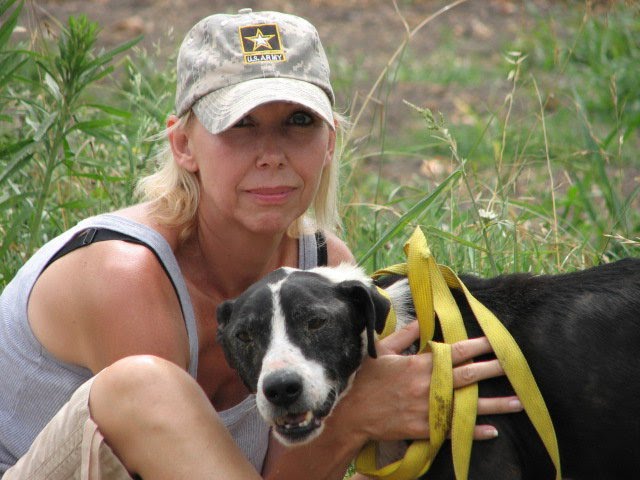What a wonderful idea! Dogs and Inmates.
Think if every shelter could have this kind of work for their dogs. I have always said; mixed dogs are wonderful. They are many times very smart since they have to work with all their senses to survive. Same with many children. When we adults doesn't interfere to much in their "own thinking" with our perceptions of what is right and what is wrong.
Below is a wonderful article from North Carolina, USA.
When we lived in North Carolina, USA, I volunteered for the shelter that Linden Spear The Haven outside Raeford.
I am so glad for her new project!
"RAEFORD — When Bob Lewis and Buddy the dog first met a month ago, they were a little skeptical of each other. Both were tough, street-wise and more than a
little wary of people. Lewis, an inmate at the McCain Correctional Hospital in Hoke County, had been behind bars for about 10 years. Buddy, a medium-sized mixed-breed, had been held at a no-kill animal shelter for much of his short life. Their shared history brought them together. The pair met through a new Sandhills community College program at the prison that teaches inmates how to instruct dogs in basic obedience.The program is an offshoot of the college’s three-year-old Puppies Assisting with Sight program, or PAWS, where inmates learn to train seeing-eye dogs for the blind.
Joe Bailer, the program’s instructor, said he came up with the idea to teach basic obedience to regular shelter dogs this year while the group was waiting on a fresh shipment of dogs for the PAWS program.
The PAWS’ dogs are specially selected and come to the prison from Florida, Bailer said. In the meantime, Bailer wanted to teach inmate-instructors a new set of skills — basic obedience training dog care.
To do that, Bailer partnered with Linden Spear, who operates the state’s largest no-kill animal shelter — The Haven — at her farm outside Raeford.
In January, Bailer and Spear selected 10 to 12 dogs between the ages of 6 months and 12 months and assigned them to inmates in the program.
The inmates were then tasked with naming the dogs, feeding and bathing them, and teaching them to sit, stay and lie down on command. The end result, Bailer said, is that the dogs become more adoptable, and the trainers become more experienced. So far, it’s been successful.
Five dogs from the program have been adopted, Bailer said. The program also has been good for the emotional well-being of the dogs, who would otherwise have little one-on-one contact with humans.
“The dogs have gained three to five pounds apiece, and they’ve become very ciable,” said Bailer, who watched the animals go from shy, scared creatures to outgoing and affectionate pets.
Lewis said his charge, Buddy, has blossomed since the lessons began about a month ago. Before, Buddy would shy away from people or bark in fear, Lewis said.
Now, Buddy — though still “vocal,” as Lewis puts it — appears to be a happy, well-adjusted dog that can roll over on command and even sit with a dog biscuit on his paw until he’s allowed to eat it.
“They’re just diamonds in the rough,” Lewis said. “They just need someone to pay attention to them.”
The dogs aren’t the only ones who are blossoming because of the program, said Mary Jones, program supervisor at the prison. Jones has noticed the biggest change in Lewis, who was often worried and angry before he started the program. Since then, he’s become happier and more relaxed.
As an added bonus, none of the inmates involved in the PAWS program over the last three years has returned to the prison, Jones said.
“The interaction with the dogs has a lot to do with it,” she said. “A lot of
the prisoners don’t have any family or any support. They just don’t care about
anything. Through the dogs, they learn how to basically love.” Lewis agreed.
“I’ve learned that these dogs look at you unconditionally,” he said.
“They don’t care about your past. It’s taught me to learn to care for something
other than myself.”Fayetteville Observer writer, Jennifer Calhoune.
This is barking good Amore!

No comments:
Post a Comment